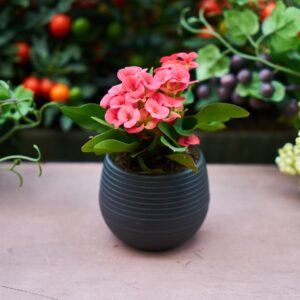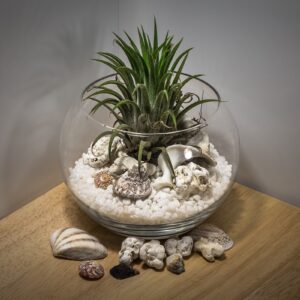
Whether you’re trying to spruce up your home or just want to add some color to your space, there are several indoor plant types you can choose from. From succulents to peace lilies, read on to find out more about your options.
Aloe
Originally native to the Arabian peninsula, aloe is now grown in tropical and arid climates. In addition to being a popular houseplant, aloes have many medical uses. They produce a soothing gel in the leaves, making them an ideal choice for many situations. They also make great companion plants to other succulents and cacti.
Aloe is a low-maintenance plant, especially when grown indoors. They are also very easy to grow from cuttings. They thrive in a bright, sunny location. They are ideal for use in beds and containers. They grow quickly, forming dense clumps of large, rounded leaves.
Aloes are also a good choice for an indoor plant because they are drought-tolerant. They do not need to be watered often, but they can become root-bound if they are not watered enough.
They can be planted in pots, but they do best when grown in well-drained potting mix. Make sure that there is at least a three-inch space around the rim of the pot. This space is needed so that the bottom leaves can sit just above the soil.
Aloes also need as much natural light as possible. This means that they are best grown in a south-facing window or a western-facing window.
Asparagus Fern
Often known as a tropical plant, Asparagus Fern is a low-maintenance ornamental plant. These plants thrive in humid, warm environments, making them ideal indoor plants for your home. These versatile plants can grow to heights of three to four feet.
Asparagus ferns are ideal for hanging baskets, potted plants, or as bedding plants. They are hardy enough to grow outdoors in climate zones 9 to 11, but they are best kept indoors. They do not require fertilization through the winter, and can thrive in a wide range of temperature and humidity conditions. They are also drought tolerant.
If you want to plant asparagus ferns in your home, you will need to ensure that the plant has plenty of water. This can be achieved by keeping a small tray of water near the plant. The water can be refilled periodically. It is also important to allow the plant to dry completely between waterings.
If you live in a cold climate, your asparagus fern may die back to the ground in the winter. You can protect the root system by covering the pot with a heavy mulch. You can also mist the foliage to provide moisture to the air. If the plant is overgrown, you can prune the foliage to reduce its size.
Peace lily
Often known as the White Lily, the Peace Lily is an indoor plant that purifies the air. Its white flower gives the plant its name. The peace lily is native to tropical regions and can be grown outdoors in zones 10 through 12. However, they are very common as houseplants.
The peace lily is a very easy plant to care for. It does not need frequent fertilizing. It is best to use organic houseplant fertilizer.
The peace lily prefers to be in indirect light. However, it will tolerate some direct sunlight. You will need to avoid leaving it in the sun for long periods. This is because direct sunlight can burn the leaves. It can also be damaged by too much water.
It is important to water the peace lily properly. It is best to use room temperature water. If the water is too warm, the leaves can turn yellow. The peace lily is susceptible to root and stem diseases. These are usually caused by improper care.
Mealybugs and scale insects can also be a problem. To remove these pests, soak a q-tip in alcohol and swab the plants. You can also spray insecticidal soap on the plant.
Money tree
Keeping plants indoors is a good way to give them extra care. There are many different types of indoor plants, including money trees. However, the best indoor plants for you will depend on your location.
To keep your money tree healthy, you need to provide it with ample water, humidity, and light. It is also a good idea to rotate the plant. This helps keep its growth even.
You should also make sure the potting soil is well-draining. This will help prevent moisture from collecting at the bottom of the pot. You may also consider repotting your money tree, which will help it grow faster. Repotting should be done every couple of years.
Adding a humidifier to your home can also help increase humidity. You can also buy a humidity monitor to help you keep the humidity level at a suitable level.
You can also grow your money tree using cuttings during the summer. This is an easy way to propagate new plants. However, you should be careful not to overwater the plant. It is also important to avoid pests. You can use a combination of water and insecticidal soap to keep scale infestations at bay.
In addition, you can also mist your money tree to improve growth. This can be done by placing a saucer of water underneath the plant. The water will evaporate, which will enhance the humidity in the air around the plant.
Succulents
Whether you’re a newcomer to the world of succulents or you’re an avid succulent collector, there are many varieties of indoor plants you can choose from. Many succulents do best in sunny spots, but others prefer shade. Each variety has different needs and care requirements, so it’s important to familiarize yourself with the features of each type before purchasing a plant.
Avonias are a type of succulent that prefers a dry climate. They are also known for their resilience to damp weather. These succulents can mature to a beautiful pink color.
Sempervivums are another type of succulent plant. These are groundcovers that store water in their thick leaves. These plants are found in the mountains of Iberia, Armenia, the Balkans, and Iran. Some species are even used as landscaping plants. They are hardy to US Zone 4.
Donkeys tail succulents are another type of succulent that prefers sun. These succulents are very easy to care for. They have gray or green leaves with tubular flowers. They are also suitable for windowsills or shelves. They’re very easy to transplant, and they can even be grown from cuttings.
Agave succulents are another popular type of succulent. They’re popular because of their dainty appearance. They bloom during the summer and fall. They also absorb water from the air. This makes them ideal houseplants.
Climbing plants
Adding plants to your home is a great way to add colour and interest. Indoor climbing plants are easy to grow and can even add a touch of colour to your walls. You can also find indoor vines that are perfect for a rustic feel.
You can grow indoor climbers on your ceiling or on a hanging basket. You can even train the plant to drape over a trellis. These plants are great additions to your home and add texture to an urban jungle. You can also propagate the plant using stem cuttings.
The Spiderwort plant features a unique growth habit and creeping stems. It has light-colored stripes along its length.
Another plant to consider for your home is the betel leaf. This plant has heart-shaped leaves and is eaten for its medicinal benefits. It is also used in Asian religious ceremonies.
This plant is a tropical vine that can grow up to 20 meters. It produces colorful leaves that can fade with low light conditions.
The fast-growing climber has glossy, opalescent foliage and can grow in a room with a balcony or a terrace. It is easy to care for and can be trained in different ways.
Zuzu plant
Whether you are looking for a plant to brighten a corner of your house or a plant to purify the air, the ZZ plant is a great choice. It is also an easy plant to care for.
The ZZ plant is a member of the Araceae family. This family includes philodendrons and peace lilies. These plants have a spadix that contains male and female flowers. They also have a bract that encloses the spadix.
This plant has glossy leaves. They can be a light green or a dark green. They can be up to 60 cm long. The color of the flowers varies, from bright yellow to brown. They are usually hidden among the base of the leaves. They can be easily removed without damaging the plant.
ZZ plants are easy to care for, but they need regular watering. They can tolerate dry conditions, but overwatering can lead to root rot.
ZZ plants do best with medium to bright indirect light. They also do well in low light conditions. During the growing season, fertilize the plant with a balanced liquid houseplant fertilizer. You should stop feeding the plant in cooler months.
ZZ plants are not particularly hardy. They can survive months of drought, but they are prone to root rot.





